Ask Ethan #39: Why does light stretch as the Universe expands?
General relativity sure does make some counterintuitive predictions.
“They say the universe is expanding. That should help with the traffic.”
–Steven Wright
Each week on Ask Ethan, I take a dive into the questions and suggestions you’ve sent in, and pick my favorite one to answer for you and the entire world. This week’s question is a doozy, and it comes from Mikko, who asks:
Reading your latest post about cosmic inflation made me think about a question that has come to my mind many times when I try to understand similar topics — the relation between wavelength of light and the expansion of space. We have here the balloon analogy, or rubber strip with the wave drawn on it, expanding as the rubber strip gets stretched. But does this need to be so? Can the light not go on, maintaining its frequency and wavelength whether the space around it expands or contracts or whatever?
This is a big, big question, so let’s start at the beginning for some context.
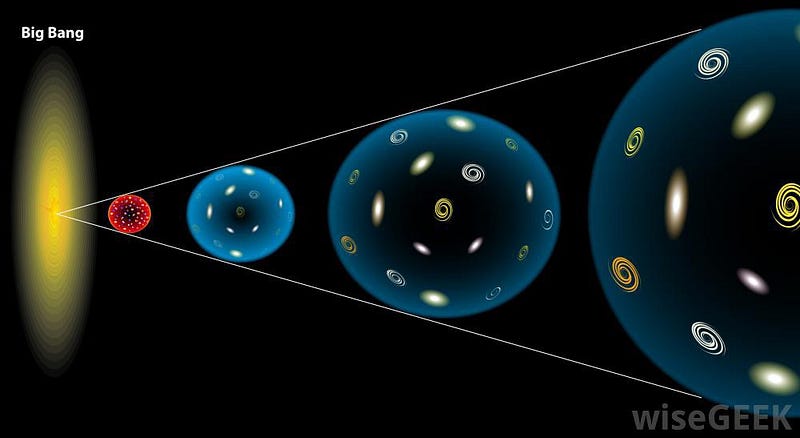
It’s no secret that our observable Universe began with the Big Bang: a set of initial conditions that tells us our Universe was hotter, denser, more compact, and expanding rapidly in the past. The Universe continues to expand today, with everything that isn’t gravitationally bound together continuing to expand indefinitely.
On average, we can imagine drawing a sphere around a given volume of the Universe today, enclosing all the matter-and-energy inside. And if we extrapolate backwards into the past, those same number of particles will be enclosed in a much smaller sphere.
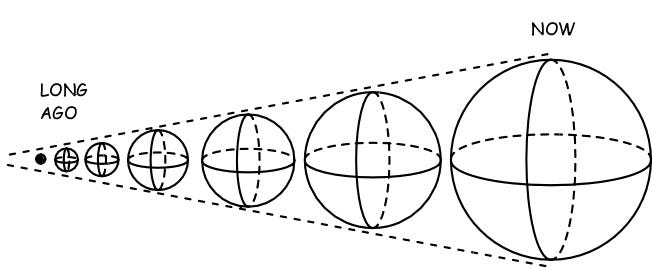
Now, you’ve got to remember that this isn’t your great-great grandfather’s space, with the idea that coordinates are fixed, that distances are well-defined between any two points, and that observers at different locations agree on what they’re seeing (and when). This is a Universe governed by General Relativity, where space and time are relative to the energy, momentum and position of any observer within it.
If we considered ourselves to be just one particular, but arbitrarily long-lived observer in this Universe, and we looked at the positions of galaxies as they were many billions of years ago and then again today, what would we see?
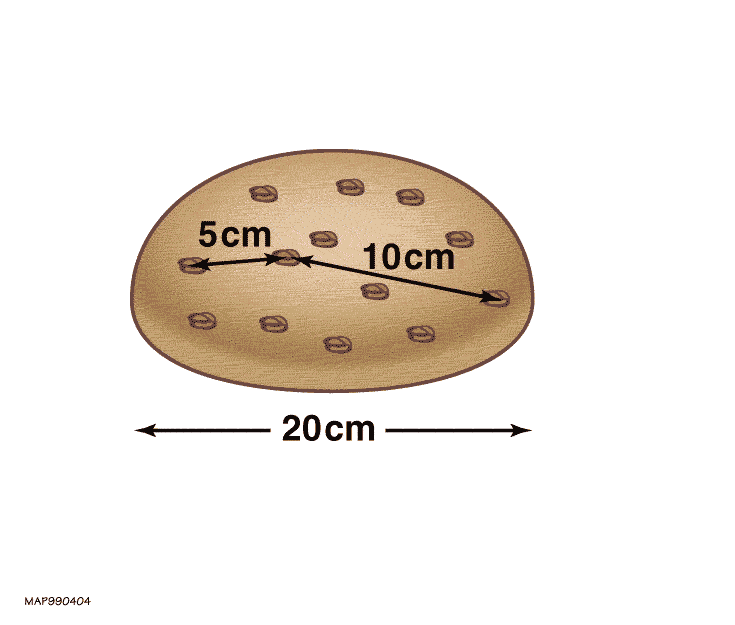
We would see that the positions of galaxies changed very similarly to how seeds changed position in a loaf of bread that was leavening. Note, however, that the seeds themselves don’t expand, because they’re gravitationally bound. The Universe expands around them, increasing the distance between them, but things like individual planets, stars, galaxies, even groups and clusters of galaxies don’t themselves expand with the Universe; they only expand away from other bound structures that they themselves aren’t also bound to.
In other words, your waistline may be expanding, but you cannot blame that on the Universe!
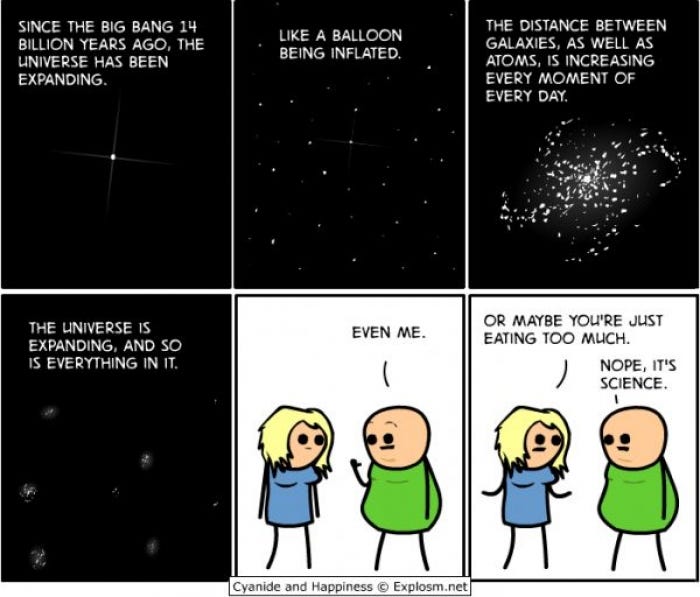
What’s causing this to happen?
The culprit in all of this, as you might have suspected, is the nature of spacetime itself. The way the Universe evolves — the way distances expand or contract for an observer in any reference frame — is governed by the amount of matter and energy in the Universe. This is the key revelation of General Relativity as it applies to cosmology: the matter and energy in all its forms present in the Universe determines the evolution of space and time. And it has done so for the entire history of the known Universe, and as far as we can tell, will continue to do so arbitrarily far into the future.
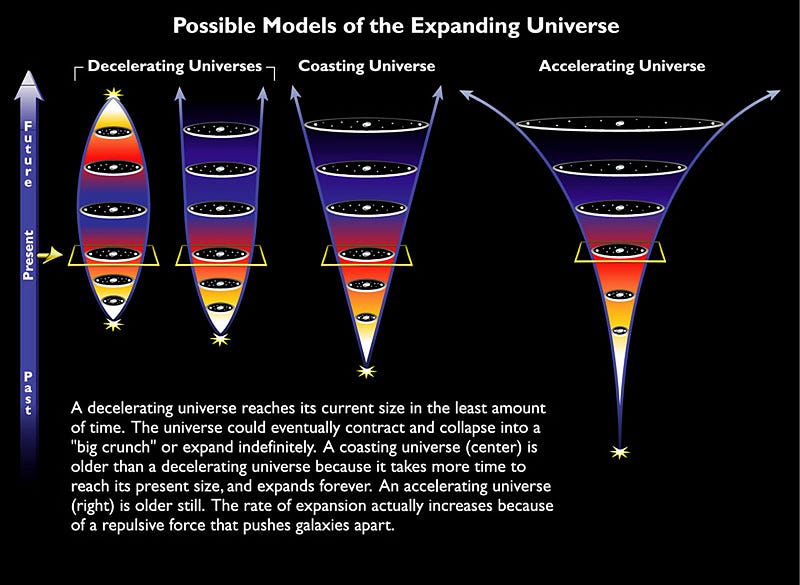
So, finally, what about light? You might visualize something like Mikko has described — the surface of an expanding balloon — and imagine that you’ve drawn grid lines on it. Since the energy of photons (light) are defined by their wavelength, it stands to reason that as the Universe expands (or, in theory, contracts), the wavelength will get stretched along with the expanding Universe (or compressed, in the case of a contracting Universe), causing it to become redshifted (or blueshifted, accordingly).
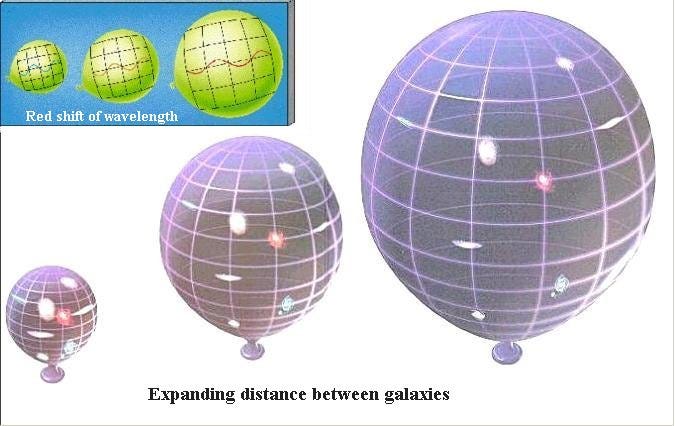
Now, you may ask yourself why this is happening, and how can we be sure that this effect is the one at play? After all, the Universe may be expanding, but that’s not the only thing that can cause a redshift.
In particular, you’ve also heard of the Doppler Effect, which is what causes a police/ambulance siren to sound higher pitched when it moves towards you and lower-pitched when it moves away from you.
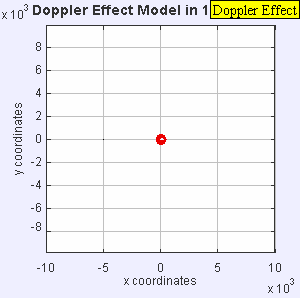
Just like the crests of sound waves get compressed in the direction of motion and stretched away from the direction of motion, light behaves in the same exact fashion! If a light-emitting source is moving away from you, that light appears redshifted, while if that source is moving towards you, the light appears blueshifted.

But you also must remember that according to General Relativity, gravitation also impacts the energy of photons. (Remember, spacetime and matter/energy are intricately linked!) Think about how space is curved due to the presence of mass, and think about how that must look around the Earth, if you try and visualize it.
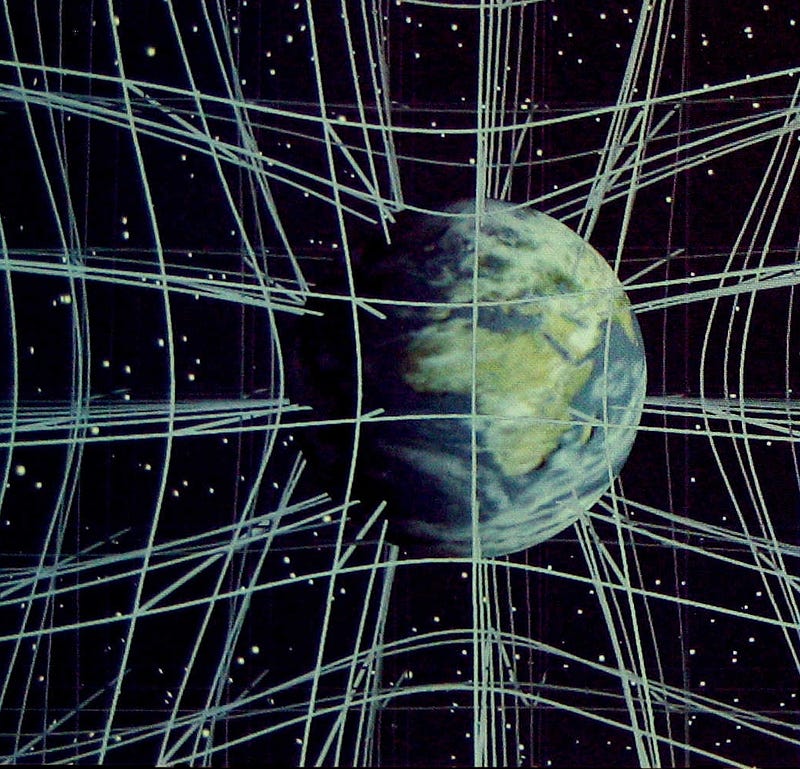
When we send signals up to space and back down to Earth — such as for GPS — we need to account for the relativistic effects of not only motion, which is special relativity, but also for the gravitational field of the Earth.
Imagine what would happen if I had an electron and a positron, a pair of matter/antimatter particles, high above the Earth. When I annihilate them, they’ll produce energy in the form of two photons of a very particular energy: of an energy equivalent to the particles’ rest masses!
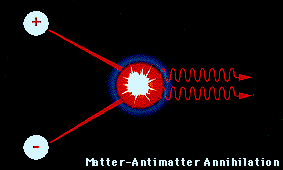
Now, what if I dropped those particles high above the Earth, annihilated them up there, and then let the photons reach the Earth’s surface? Would they be the same energy on the Earth’s surface as they were in space?
You might be tempted to say yes, but that would violate the conservation of energy. Think about what would happen if I instead dropped these particles and let them fall. As they traveled down to the Earth’s surface, they’d pick up kinetic energy, moving faster and faster as they fell. Just before they hit the Earth’s surface, they find one another and annihilate.
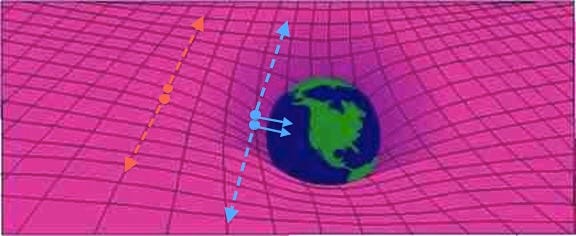
It shouldn’t matter whether the particles annihilate and then fall, or fall and then annihilate; by the conservation of energy, there must be a gravitational shift in photon energy as the gravitational properties of space change!
I bring these up so that you recognize there are two possibilities for how redshift can occur. And now, we come to the galaxies found near and far in our expanding Universe.
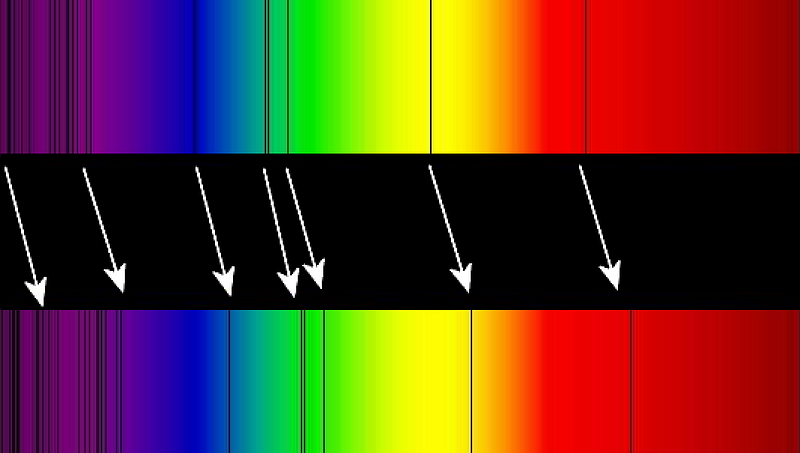
Is this redshift occurring because space is stretching (i.e., the gravitational reason), or is this redshift occurring because the galaxies emitting the radiation are moving away from us?
What’s fantastic about this notion is that, if it’s the latter, because there’s a cosmic speed limit — the speed of light — the galaxies that we see at large distances should have a different redshift/distance relationship than General Relativity predicts! The former (GR) prediction is shown in black, below, while the non-GR prediction, of having redshift be unrelated to spacetime (being defined simply by the speed of light times the lookback time), is shown in red.
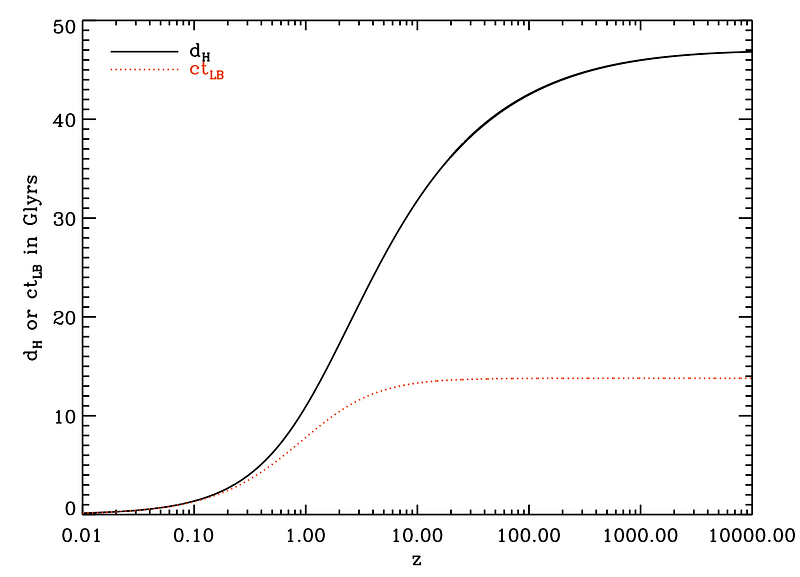
This is an important cosmic test to perform, because if the wavelength of light doesn’t stretch as the Universe expands, the Cosmic Microwave Background cannot be explained, and hence the Big Bang would be wrong!
Fortunately, General Relativity passes this test with flying colors, and frequency/wavelength does change as the Universe expands, something we’ve directly measured in a variety of ways, including by measuring the temperature at different epochs in the Universe’s history.
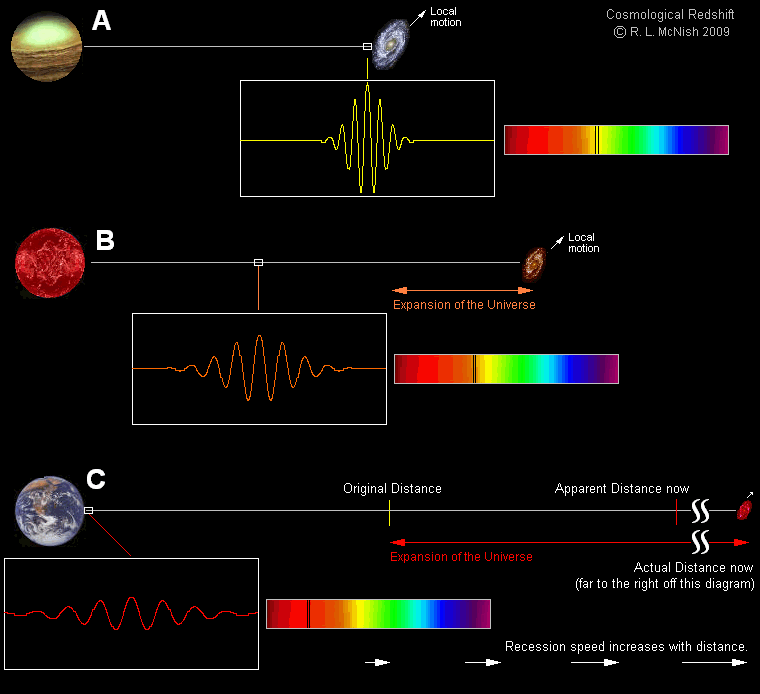
And that’s why — in a Universe governed by General Relativity, which appears to be our Universe — light must redshift or blueshift as the Universe expands or contracts, or as the gravitational properties of space evolve in general.
Thanks for a great question and I hope you enjoyed this edition of Ask Ethan. Send in your questions and suggestions here, and the next column could be all about whatever you choose!
Have a comment? Leave it at the Starts With A Bang forum on Scienceblogs!





